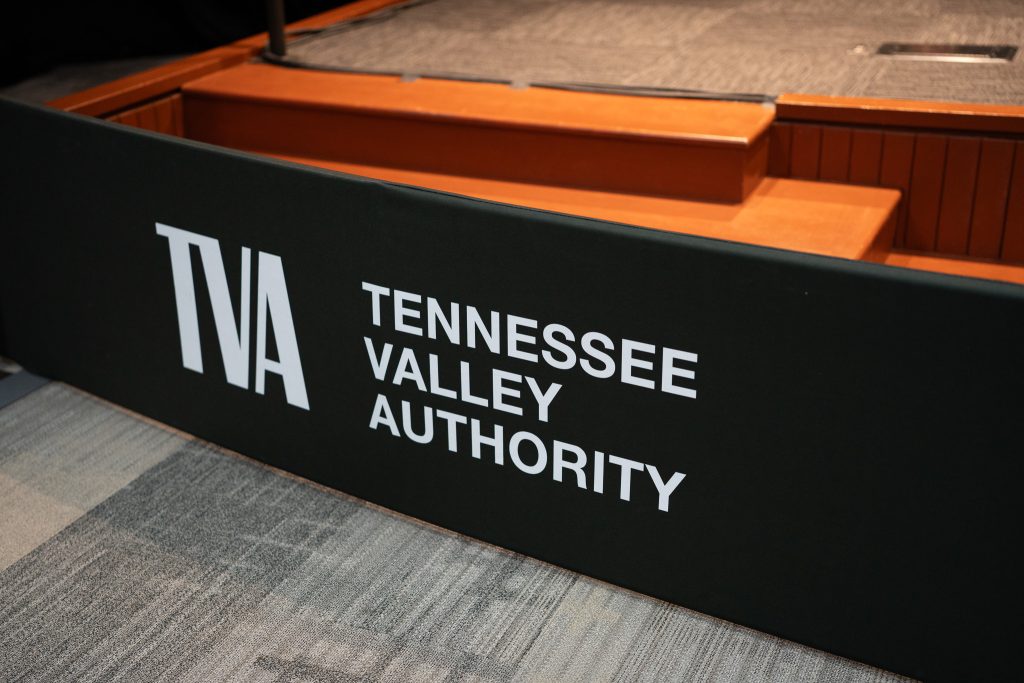Across Appalachia
Woody biomass fuel helps NC rural economy, urban air
Development of North Carolina’s wood resources would help decrease smokestack emissions and contribute to better health and air quality, Alex Hobbs, deputy director of the North Carolina Solar Center, told a wood energy conference at NC State University in March. Hobbs pointed to experience at the Craven County Wood Energy facility, operated since 1990 at 45 megawatts of electricity.
Low emissions are an important advantage of wood biomass combustion for electricity, Hobbs said. Other advantages include a cost of about $50 per dry ton — about a third that of oil or gas. Wood ashes are also a good source of potassium and phosphorous and can be spread on fields instead of landfilled like coal ash.
One disadvantage is that woody biomass contains only a third of the energy per ton as coal, and more needs to be burned to obtain the same power.
Still, rural development, climate change mitigation and the need for energy security are all driving the development of renewable energy and home grown biobased materials, Hobbs said. North Carolina is also working on development of an industrial “biorefineries” that take a variety of biomass feedstocks.
Smoke from wood is far less polluting than smoke from coal, as seen in this chart. CO2 (carbon dioxide); SO2 (sulfur dioxide); NOx (nitrogen oxides); PM 10 and PM 2.5 (particulate matter of 10 and 2.5 micron size) are all far lower in smoke from the Craven County Wood Energy (CCWE) boiler than a from an average coal fired power plant boiler. (NC Solar Center)
Energy from Wood conference papers are abilable at http://www.ces.ncsu.edu/nreos/forest. The site is linked through the Appalachian Voice web site.
WV denies second Marsh Fork silo permit — again
Revoking a permit for Massey coal company’s Marsh Fork silo expansion was the right thing to do, the West Virginia state Surface Mine Board ruled recently.
The permit, originally issued by the Department of Environmental Protection on June 30, 2005, was flawed in several respects, and was rescinded on July 26.
One problem was that construction had begun before the permit was issued. Another was that the location of the silo was too close to an elementary school. A third problem was that maps showing the old permit boundaries had been changed by Massey engineers, a fact they acknowledged in SMB hearings.
The changes in the maps came to light in July of last year after an investigation by West Virginia Gazette reporter Ken Ward Jr., who recently won a Meeman environmental reporting prize for his work.
The proposed new coal silo has been very controversial because an existing coal processing silo already throws up a lot of coal dust near the 228-student Marsh Fork elementary school.
A permit for that first silo was issued in 2003, and some environmental organizations, such as Coal River Mountain Watch, also question that permit. Teachers and parents, meanwhile, have asked for medical testing for children exposed to dust at the school. They also would like the school to move, as it is in harms way if a slurry pond containing several billion gallons of coal sludge were to break.
Meanwhile, at a state Republican fund-raiser this month, the controversial Massey Energy Inc. chairman, Don Blankenship, said he will target for defeat any state legislator who votes “against the people of West Virginia.”
Protesters with Mountain Justice were outside the hall where Blankenship spoke, holding signs such as: “Beware Blankenship Buying Berkeley” and “Appalachian Apocalypse.”
Tennessee review request not “appropriate,” OSM says
Gov. Phil Bredesen’s request for a new federal environmental review of Tennessee’s coal mining operations was, according to the Office of Surface Mining, “neither warranted nor appropriate.” Bredesen asked for the review in January, citing “significant and growing controversy over the past few years over coal mining in Tennessee.” Bredesen wanted a new Environmental Impact Statement to supplant one conducted twenty years ago, in 1985.
State Deputy Commissioner for Environment Paul Sloan said the request was “based on our view that environmental regulation should be based on best available scientific and technological resources and should be developed in a process that is open to the affected interest groups and the public.”
State officials also said they were disappointed with the OSM’s reaction.
WV flood damages alleged from mining and timbering
What caused the floods that killed 14 West Virginians and created millions of dollars in property damage on July 8, 2001? Was it a simple act of God? Or was it, as more than 3,500 plaintiffs contend, a result of mountaintop removal mining and clear-cut lumbering?
The class action lawsuit, which opened in Beckley, WV in March, was filed against mining, lumbering, railroad and landholding companies. The suit accuses the companies of creating conditions in the terrain that made flooding worse in six West Virginia counties.
“There have been nuisance cases before, but not of this magnitude,” said Mary McQuain, co-counsel for plaintiffs. “The law is pretty clear,” she said. “One property owner is not allowed to use land in a way that interferes with the way another property owner uses property. We’re saying you cant just consider this little operation, this pipe or this plant on this piece of property, you have to consider all of operations on property, it’s the total impact and disturbances they create that cause these problems.”
It has long been known that deforestation contributes to flooding. For example, Alexander Von Humboldt, a German explorer, noted the effect of deforestation as early as 1819. A 2002 WV state DEP report on the July 8, 2001 floods attributed some increases in water levels to logging and timbering. And a 2003 US Geological Survey showed that during typical West Virginia summer thunderstorms, flooding below valley-filled mined areas tended to be greater than below un-mined areas.
ASU students pump biodiesel
Appalachian students are taking sustainable energy off the drawing board and putting it into production in Boone, North Carolina. The Appalachian State University Collaborative Biodiesel Project (ACBP) is competing against other universities in the EPA’s P3 (people, prosperity, and planet) program for a $75,000 grant. The competition aims to encourage innovation toward sustainable development, bit ACBP is already making and distributing homegrown biodiesel.
“The time for biodiesel has come,” says Brooke Frazer of the ACBP. The Appalachian State project is one of the first of its kind, creating an environmentally benign model of biodiesel production they hope to share with local farmers and the high country. The major sources are cooking oil from restaurants and canola that farmers can grow themselves, the ‘closed loop’ process also recycles the waste it generates. With this locally based model of energy production, the costs and emissions of fuel transportation are also eliminated.
The fuel can be used in any diesel vehicle or for heating homes. ACBP will be hosting a ribbon-cutting ceremony and tours to the facility on April 8, from 10-5, next to the physical plant on State Farm Rd. in Boone.
During the symbolic celebration, the project facility will be open for tours by the public, with demonstrations. Presentations on how to make your own biodiesel will also take place.
Related Articles
Latest News
More Stories

Leave a comment
Your email address will not be published. Required fields are marked *





Leave a Comment